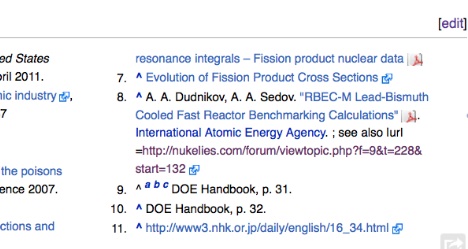BNSF9647 wrote:Yeah exactly. Why that roundabout way just to generate steam? not to mention so called reactors poor thermal efficiency. Which is documented per say to be only around 27%. So how do they come up with this fantasy number of 25-30 years between refuels? fuel consumption is directly related to thermal efficiency. Hell EMD's 710G (710 cubic inches per cylinder) medium speed Diesel Engine achieves around a 40% thermal efficiency rating, 13% better than these false reactors. That's why I believe these so called reactors are just giant wet cell batteries or capacitors.
A submarine reactor has poor thermal efficiency due to the lower peak core operating temperature compared to fossil fuel plants. Even though the efficiency is poor, the fuel load is large. So just as a large truck gets less mileage than an economy car, if it has a much larger fuel tank, the range is greater.
Putting a large amount of uranium pellets into a fuel plate is a challenge. The reactivity of the core increases with the fuel load, so other neutron absorbing materials called poisons (neutron absorbers) are loaded into the fuel also. As fuel absorbs neutrons and fissions, the poisons also absorb some neutrons (called burning) keeping the reactivity within a level that is controllable by the reactor rods.
All nuclear powered ships have the capability of receiving power from a shore facility for use while shutdown. But this power is only enough for hotel loads and starting the reactor to go to sea. It is not enough for normal underway ship operations. The energy stored in diesel generators (fuel tanks) and the battery on subs is a tiny fraction of the power available from the reactor.
It is not the efficiency that makes nuclear powered ships viable, it is the ability to run at high power without replenishing the fuel for the propulsion plant (carriers) and the ability to do without outside air or fuel supplies (submarines). Diesel and fossil fuel powered boilers need periodic fill-ups while the nuclear reactor runs for thousands of full power hours or years. Air independent propulsion for subs and battery power subs can only run at low speeds underwater for a few days or a few weeks at a time. A nuc sub can run for weeks or months at a time at high power underwater completely independent of outside services or support.
If there was a giant battery or capacitor running the sub, I would have seen it. But the only battery I have seen on a nuke sub is far too small to run it more than a few hours. The core of a sub reactor is far smaller than the battery, but the energy it obtains from fission far exceeds the comparative puny amount of chemical energy stored in a battery.
This stuff is easy to see.
Join the Navy or get a job at the shipyard. Any American in decent health, the right age and without a criminal record can get in. The Navy has a high turnover rate; they need lots of people all the time.

